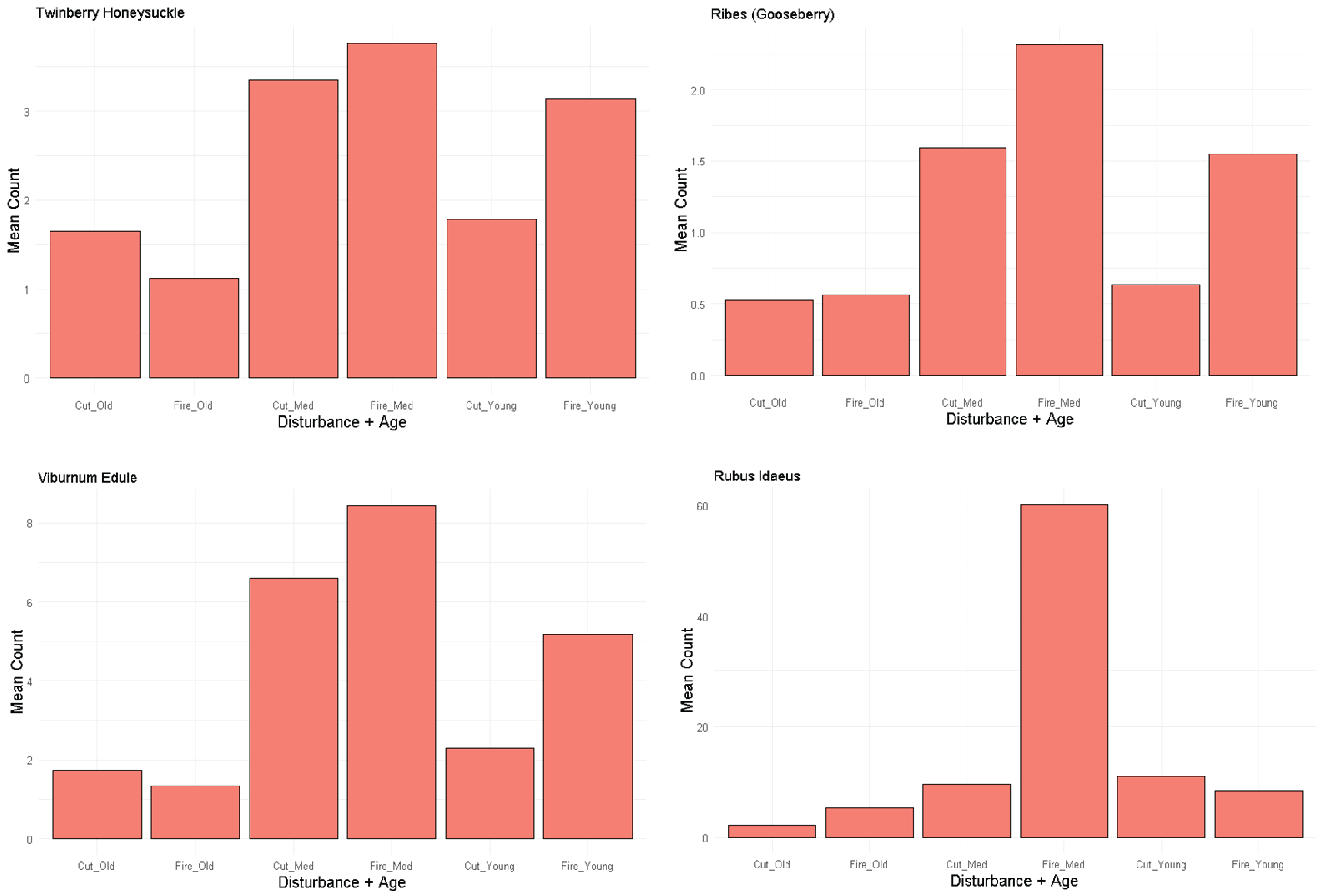Chris Souliere
Analysis is almost complete in determining whether forestry-based habitat disturbances (i.e., cutblocks) can act as surrogates to natural forest fires in relation to grizzly bear food-resource supply and how this relates to landscape carrying-capacity. The goal is to assess whether cutblocks can be used as surrogates to natural wildfire disturbance and how these forestry-based disturbances, in conjunction with fire disturbances, can enhance regional habitat supply and improve carrying capacity models in ways that most benefit bear recovery, while also informing forest harvest management practices.
In summer 2017, common grizzly bear foods were recorded in 99 plots among three treatments/disturbances (cutblock, fire, and undisturbed forest control), and three different age-classes to ensure proportionality of early, mid, and late successional stages (~ 5, 20 and 60 years). Emphasis was on measuring understory fruiting shrubs, forbs and graminoids that are preferred by bears. Data was primarily collected in the Yellowhead bear management area (BMA), with supplemental sampling occuring in the Grande Cache BMA. Using the collected data, count models have been developed to determine shrub and fruit abundance of common grizzly bear foods (large shrubs, ground-dwelling shrubs, and fruits). Productivity differences between disturbances and age-class will be further assessed by converting shrub and fruit count models into total digestible energy using already developed bionergetic models and energy budgets (Nielsen et al., 2015). The example figure below shows mean count (i.e., abundance) for certain species of large shrubs (> 50 cm). Overall, abundance peaks at mid-age for both cutblock and fire disturbances. For the young-age stratum, fires typically have larger abundances; whereas for the old-age stratum, cutblocks typically have larger or equivalent abundances.
Figure 1: Mean count of four species of large shrubs (> 50 cm) categorized by disturbance and age. Species from left to right: Lonicera involucrata (twinberry honeysuckle), Ribes (gooseberry), Viburnum edule (lowbush cranberry), and Rubus idaeus (red raspberry). Count models fitted with a zero-inflated negative binomial distribution. For labels on the x-axis: Cut refers to cutblock and Med refers to mid-age.

